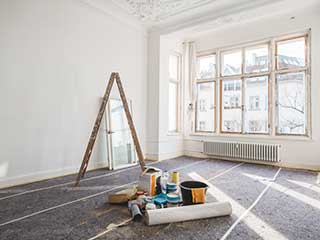
Proper techniques in drywall finishing
A majority of homes in the United States built after the 1940s have drywall covering in their interior walls. Walls were made of plaster before this period, but since it took up a great deal of money and time, builders started using drywall instead.
Though drywall installation still needs a great amount of skill, the effort needed is not on par with that of a plaster wall. Texture coating of ceilings and walls is done to mask the imperfections expertly. However, the nails, seams or screws cannot be covered in this manner. Proper finishing is needed to accomplish this. A good finish will give the texturing more attractiveness.
Main Considerations in Drywall Finishing
The finishing of drywall includes covering the screws, seams and nails with finishing compound, also called drywall mud, and joint taping. The main objective in finishing is to produce a smooth surface free of blemishes with no visible seams or fasteners in the walls, making them appear like a single solid, smooth sheet.
The Finishing Process
The finishing involves a multiple coat application process. The initial coat involves filling nail holes and screw holes, and tape application. There are two tape types: fiberglass and paper. The fiberglass is in the form of a screen, and the sticky tape is laid on the drywall seams and adhered to the wall. The paper tape is adhered to the wall using a finishing compound. Unbroken tape runs give a more complete look. To smooth out the layer, a finishing knife is used.
Once the first coat is over, sanding is done and another coat is given. A vibratory sander or pole sander is used. For better effectiveness, the drywall sand screen attached to an electric or pole sander is used to prevent dust from clogging, as happens with sandpaper. The second coat is finished with tapering or feathered edges.
Over the second coat, a final or third coat is given with feathered edges. This is later sanded after drying, and once a smooth surface is obtained, texturing is done.
Difficulties Faced in Drywall Finishing
Some of the frequent issues that are experienced with finishing include lumpy drywall compound, tape bubbles, and nail pops. A taping compound that is slow drying, protruding screw heads, and crushed drywall edges are other common difficulties faced with the installation of drywall. Minor defects like ridges, dips, or scuff marks will become visible only when you start the primer application.
Butt Joints Taping
Joint taping of the butt joints should be done initially with a thin initial coat. This should be followed by two to three coats, so the ridge is hidden well. Each coat should be smooth and flat, and be leveled out at both sides of the joint. A butt joint requires patient application of the coating.
While finishing a drywall, you need to ensure that the quality is maintained properly. The experts at drywall repair use professional techniques to prevent flaws and slow-ups. From the drywall preparation and material selection to tape application and finishing, every step is meticulously supervised and done to perfection, enhancing the appearance immensely.

